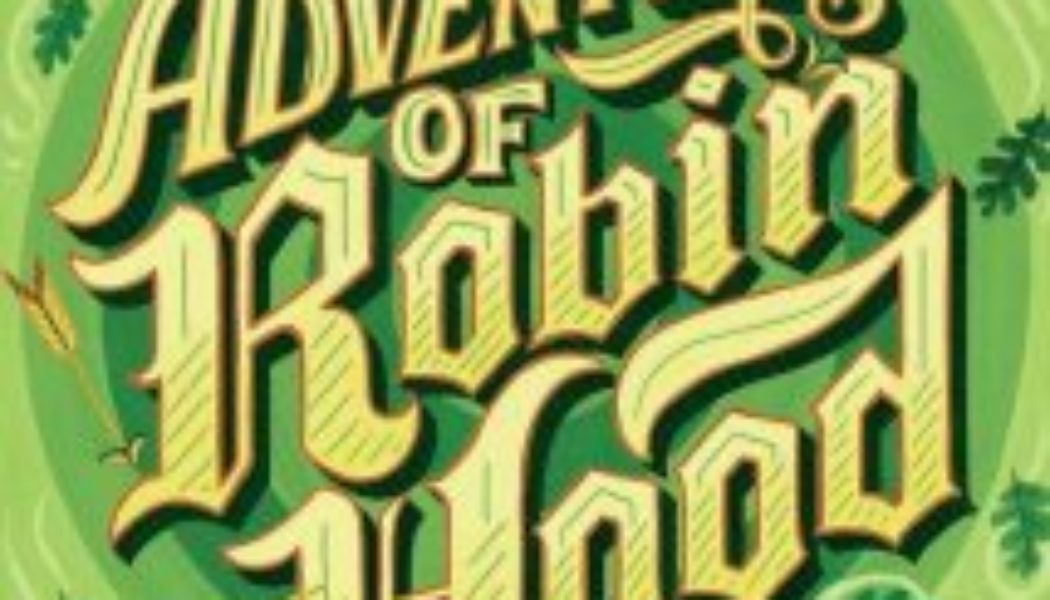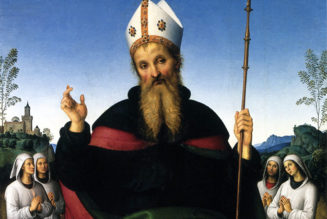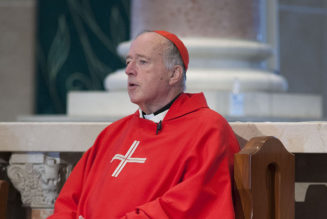Robin Hood’s legend lives on as a model for all who try to serve God when government, the rich, and, all too often, those vowed to God’s service explicitly are fighting against us.
The Adventures of Robin Hood by Roger Lancelyn Green, illustrations by Arthur Hall (Puffin Books, 2010, 294 pages)
 The most difficult conflicts are often with those with whom one agrees on the general lay of the land. That was apparent to me many years ago when my wife and I started publishing positive articles on the Harry Potter series. In contrast to those who assumed that this was a series leading readers to actual witchcraft, we had read the books and found them to be wonderful tales animated by a concern for virtue and character. What we determined was that most of the opponents of the series had not actually read the books at all.
The most difficult conflicts are often with those with whom one agrees on the general lay of the land. That was apparent to me many years ago when my wife and I started publishing positive articles on the Harry Potter series. In contrast to those who assumed that this was a series leading readers to actual witchcraft, we had read the books and found them to be wonderful tales animated by a concern for virtue and character. What we determined was that most of the opponents of the series had not actually read the books at all.
Yet one of the most awkward discussions I have had was actually about an earlier English volume. When my children were going to a classical charter school, I joined the curriculum committee briefly. I was somewhat shocked to find that some of the serious Christians, Protestant and Catholic, were bothered by the inclusion of Howard Pyle’s Robin Hood in the curriculum. Like those I had met who opposed Potter, these were people who seemed not to know more than the premise. They were bothered by the fact that students might be convinced that theft is morally OK. I argued strenuously against this interpretation. Some might have found such a situation pleasant: it isn’t often that we on the right are considered “too liberal.” But I found it somewhat wearisome. To me, Robin Hood was no scoundrel. He was a hero.
Thus it was that close to two decades after that initial curricular skirmish, I found that my youngest son, in another classical school (this time private and religious), was reading another version of Robin and his Merry Men. This time, it was The Adventures of Robin Hood, written in 1956 by C. S. Lewis’s student, friend, and fellow Inkling, Roger Lancelyn Green.
Green was the one who suggested the title Chronicles of Narnia to Lewis. He was close enough to him to have traveled to Greece with Lewis and his wife, Joy, shortly before her death. And, with Walter Hooper, he wrote a biography of Lewis in 1974. Like Lewis, he felt no compunction about writing books that children would read. In fact, he wrote a great many more of them than did old Jack. Among his many volumes are retellings of Greek, Norse, and Egyptian myths, as well as fairy and folk tales from around the world. I had read Lancelyn Green’s King Arthur and His Knights of the Round Table with my son over Christmas but had not had a chance to read the tales of Sherwood with him. So, it being summer, the time at which Sherwood Forest was always most alive, I dived in.
What is true of Lancelyn Green’s King Arthur is also true of his Robin Hood. The author provides an introduction telling of the many sources of these tales, noting that he has put them together in hopes of providing a full and complete narrative. He uses the oldest sources, such as the medieval collection A Lytell Geste of Robin Hode and the plays written by Shakespeare’s contemporary Anthony Munday, but “later, literary sources—Noyes and Tennyson as well as Peacock and Scott or Jonson and Greene” all have their place. And he tries, when possible, to take his dialogue from ballads. For each tale, he appends a lyric epigraph to give us a feel for what will happen. If the tales of Robin Hood are anything, they are poetic and singable. Even those whose experience is limited to the 1973 Disney animated Robin Hood, with Roger Miller voicing the rooster-minstrel narrator, will know this.
This is the right way to do things. Put the traditions together and pass them on as a whole reality, a story with beginning and middle and end. And if a little license has been taken to put them together, that’s OK. We want to pass on the whole and not simply disparate stories from different authors and traditions. It’s not as if kids are scholars trying to compare separate legendary traditions for a doctoral thesis. And unlike Pyle’s more archaic language, Lancelyn Green chose to write in a style more direct and modern without anachronism.
And how is Robin depicted? Is he scoundrel or hero? I think the answer is obvious. Robert of Locksley Hall is a man who is unjustly taken from his lands. He sets up camp in the deep Sherwood Forest to evade capture by the disloyal villain King John’s forces, especially the Sheriff of Nottingham. Yet he moves around England periodically, staying with friends who are sympathetic or need his help. He gathers round him or goes to help those who are oppressed by the King and the Sheriff. To borrow from the intro to the 1980s television series The A-Team, “If you have a problem, if no one else can help, and you can find them…,” maybe you can get the Merry Men.
Now, it is true that Robin is depicted as taking from those who come through Sherwood Forest, but from the very outset, Robin makes clear what they are doing in a speech. No mere gang of lawbreakers, they will indeed violate manmade laws when they must so that they can fight the tyranny of the high and mighty among the nobility and the Church. They are, he says, “outlaws, but not robbers”:
“We must take the King’s deer,” he ended, “since we must eat to live. But when the King returns I myself will beg pardon at his feet for this trespass. And now you shall all swear the oath which I swear with you, and all seeking to join us must swear also. We declare war upon all of those thieves, robbers, extortioners and men of evil whom we find among the nobles, the clergy, and burgesses of town—in particular those who follow or accompany Prince John: false abbots, monks, bishops and archbishops, whom we will beat and bind like sheaves of corn so that they may yield the golden grain of their robberies—the Abbots of St. Mary’s Doncaster, and Fountains shall we seek in particular; and I think we shall keep within our oath if we make it our special duty to harry and persecute the false Sheriff of Nottingham who so wickedly abuses his power to please and satisfy his master Prince John.
Now, my friends we do not take from these and their kind to enrich ourselves. We take for the general good, and it shall be as much our duty to seek out the poor, the needy, the widow, the orphan and all those who have suffered or are suffering wrong, and minister to their wants in so far as we can.
For those who know the story at all, it is those origin-story tales that give us such delight: the meetings with Much the miller’s son, Little John, Arthur-a-Bland, and that much beloved outlaw Friar Tuck. And it is the duels of wits with the Sheriff and with the evil Sir Guy of Gisborne that get us excited. I don’t think of the Sherwood stories as involving much in the way of the weird and uncanny (a feature that was front and center in the 1980s ITV series Robin of Sherwood), but it is there all the same. Evil can be as banal as the greed of a Sheriff or noble, but it can also be dark and perplexing. “The Witch of Papelwick” brings out that uncanny aspect.
Though it’s not a romance novel in the modern sense, Robin Hood has always been associated with the fair Maid Marian Fitzwalter. Lancelyn Green depicts her much more than in Pyle’s version. She is clearly a woman who knows her mind but is also capable of defending herself in a fight with the Sheriff’s men—without becoming the 21st-century movie Girlboss either. It’s no wonder Robin loves her so much. But he is also chaste with her.
And Robin defends, as in “The Wedding of Allin-a-Dale,” the rights of a woman to give or withhold her consent to marriage. As he said in the speech quoted above, the men of Sherwood were vowed not only to never injure a woman but also to defend and treat them all with “honesty and purity, seeing in every woman the likeness of Our Lady the Holy Mary, Mother of Christ, in whose name we take our oath, and by whose name we dedicate ourselves to the service of the Church, and to whom we pray to intercede for us before the throne of God….”
As much as Lancelyn Green’s friend C. S. Lewis embraced some Catholic views, it is hard to imagine him writing in such a vein of medieval English piety. Indeed, it was one of another of Lewis’s students, Fr. Peter Milward, S. J., who criticized his teacher’s medieval writing for avoiding the Marian element in the book A Challenge to C. S. Lewis. But it would certainly be within Lewis’s ability to depict bad actors in clerical cloth in the way Lancelyn Green’s tale of Robin does.
Indeed, Robin clearly thinks, as that speech indicates, that his is a service to the true earthly King, Richard the Lionhearted, and the true King of Kings and his Church. And yet that sometimes requires fighting back against monks, priests, and bishops. A great many of the stories told here reflect the badness of the clergy and religious. One might say that this is because of the post-Reformation sources of many of the Robin Hood tales, but anyone who has read Chaucer or other medieval writers knows that they were fully aware that the priesthood and monastic life might be higher calls, but they were all too often answered by those who had not succeeded in resisting lower urges.
Even Robin Hood’s death involves the treachery of a female monastic, the prioress of Kirkleys Nunnery. But here, too, Robin foreswears harming a woman—even an evil woman. This, too, is a part of the charm of Lancelyn Green’s story. Though Robin Hood is one of those immortal characters who we wish always to be in Sherwood Forest, his story is set in history. The perpetual struggle with Prince John continues after John again takes power after the death of King Richard. And Robin becomes a lion in winter, eventually. Later stories in this collection have him engaging in adventures little known to those who’ve simply watched the movies. King John takes his revenge on Robin after Richard’s death. And Robin even goes to sea in one tale. He is older (in his forties) and wounded when he comes to his death, but his mortality does not take away from the immortality of his character.
And what is that character? As much as I do feel some twinges about the possibility of a child somewhere deciding to steal from the rich to give to the poor, we have enough real stories of situations of tyranny in which manmade laws must be set aside. Robin is, I think, no scoundrel but a hero indeed. And, in Roger Lancelyn Green’s telling, thankfully kept in print by Puffin Books, we find him something of a saint. He really does give to the poor—something supposedly modern claimants to his title often forget to do. He really does defend the outcast. And as much as he is given to working for what moderns might call “social justice,” he does not think that an excuse for his own personal injustice. Given to righteous anger, he does indeed kill in battle, but he foreswears violence and revenge even against a woman who aided in his death. That Puffin still prints a book with such overt Christian piety and traditional views about how men should treat women is somewhat remarkable.
Howard Pyle will live on, I believe, but Lancelyn Green’s is a volume worth reading with your ten-year-old or even by yourself. The action is what you want. Arthur Hall’s black-and-white illustrations, though few, do the job well enough for the stories in which they appear. But it is the sense of Robin Hood the legend, whose life is framed by birth and death, that lives on as a model for all who try to serve God when government, the rich, and, all too often, those vowed to God’s service explicitly are fighting against us. Roger Lancelyn Green makes the man with a bow a this-worldly hero (with more than a hint of sanctity) to admire, root on, mourn at his demise, and remember.
The Imaginative Conservative applies the principle of appreciation to the discussion of culture and politics—we approach dialogue with magnanimity rather than with mere civility. Will you help us remain a refreshing oasis in the increasingly contentious arena of modern discourse? Please consider donating now.
The featured image is “Robin shoots with sir Guy” from Bold Robin Hood and His Outlaw Band: Their Famous Exploits in Sherwood Forest by Louis Rhead (New York: Blue Ribbon Books, 1912), and is in the public domain, courtesy of Wikimedia Commons.










